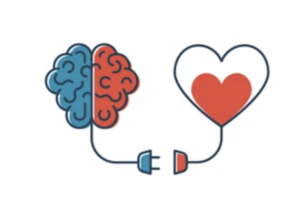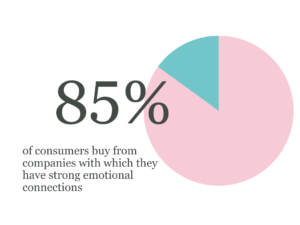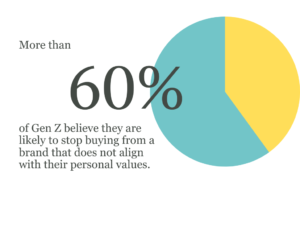There's much talk about "brand experience" these days. Every day, we hear about a new company attempting to establish an emotional connection with its target audience, and it isn't just e-commerce companies. Even brick-and-mortar retailers are looking for ways to create an emotional bond with their customers. Brand experience is an essential but often overlooked component of brand strategy. But what exactly is this enigmatic concept known as "brand experience"? How can you ensure that your brand strikes an emotional chord with your customers? Let me explain as someone who has spent time understanding how people think, feel, and behave around brands!

How do people perceive brands?
First, consider brand experience— your thoughts, feelings, and reactions to a brand that shape your long-term impression of that brand. It is holistic, combining a brand's physical and digital elements that form its ecosystem, such as in-person and online store visits, packaging, promotions, communications, social channels, service interactions, and the workplace.
Brand perception has a significant impact on brand experience. The consumer subjectively evaluates a brand's perceived benefits, qualities, personality, and image. When they interact with your brand and use your product or service, it reflects their feelings about themselves. The degree to which your brand fits into their sense of self is called "self-congruity" or "congruence." Previous interactions shape brand perception and consumer expectations for future brand performance.
Several things affect how people think about a brand, such as needs, motivations, emotions, how the brand communicates, and competitors selling similar products or services. When brands engage with people more meaningfully, they build more valuable relationships because the brand enhances how they feel.
What happens in the brain during a brand experience?
People do not choose between experiences. They choose between memories of their experiences, according to Nobel laureate and modern behavioural economics pioneer Professor Daniel Kahneman.
If you've ever had a brand stick in your mind, you've seen how the power of a positive brand experience leaves an impression. Perception is the process by which information from your senses is processed so that it makes sense and is useful. People use prior knowledge stored in their long-term memory (also known as tacit knowledge) to make sense of what they see and hear. This is why knowing what happens in your brain when you have a positive brand experience is essential.
When you encounter a brand, your brain processes it similarly to how it would a person. During brand experiences, different areas of the brain process visuals, sounds, and emotions. For instance, the sound of advertising, the smell of a workplace, retail establishment, or hospitality setting, and the aesthetics of a brand's logo or collateral. Integrating all of this information to form a brand perception. The reputation of the brand and previous experiences influence decision-making in the prefrontal cortex.
Positive emotions stimulate the reward and motivation centres of the brain. Dopamine is released, which makes us feel good and keeps us doing what we're doing. Our brains anticipate rewards from repetitive actions. Following a positive brand experience, your brain expects another reward—perhaps not immediately, but eventually. It connects the brand to your joy or satisfaction with them. This could explain why customers spend more and buy more when they have a good experience with a brand.
Why does emotional connection matter in business?
Our emotional and rational needs influence the brands we support and buy. However, psychologists believe that emotional connection significantly affects consumer behaviour. Since 95% of our buying decisions are made unconsciously, it's important to know that customers' emotions affect their buying decisions. According to a study by Motista, customers who have an emotional connection to a brand have three times the lifetime value and would promote the company at a rate of 71%, compared to the average of 45%. Simply put, consumers prefer brands that are more emotional than transactional.

Forrester claims that 85% of consumers buy from companies with which they have strong emotional connections and are more likely to spend more money. Emotional loyalty is essential in building long-term brand loyalty. "Emotional connection creates preference over the competition," says Zhecho Dobrev, a consultant and author. He found that emotional attachment drives real business value, that customers don't return because it's convenient. They see differences between doing business with your company and others.
A brand needs to offer compelling and unique experiences to stand out and make connections. Brands that use emotional connections to drive growth can outperform their industry competitors. They apply their understanding of the emotions that drive profitable behaviour to every aspect of their customer journey, from how customers first interact with them to how they engage with the brand throughout the customer journey to the products they shop for and purchase. And design each touchpoint in the journey to contribute to the brand experience.
How can you strengthen your emotional connection with your customers?
TapCreative believes that design has the power to make your audience feel something. Brands should take a more personal approach to connecting with customers. Our "Tap Tips" are as follows:
1. Focus on the user experience.
Create for the user, not the brand! You have no control over how people react to your brand. You can only have an impact on it. The best way to accomplish this is to design for them rather than for yourself. Critically listen to and understand your audience's underlying needs before designing any response. Brands that do not listen and fail to address the needs of their customers will lose out.
2. Create personality for your brand story.
People are drawn to the people and stories behind brands, so create an authentic and compelling brand story. Your background, where you came from, and why you do what you do are all valuable assets. Discover and express your brand's voice. What should your brand say? How do you convey its story, values, and what is important to your target audience?
3. Have similar values.

People want to support a brand that is responsible or gives back. Instead of simply selling products or services, brands should connect with the values of their target audience to form a stronger bond. According to an Attest survey, "more than 60% of Gen Z believe they are likely to stop buying from a brand that does not align with their personal values."
4. Remember to have fun.
Let's not overlook fun while considering the more important aspects of a lasting connection. Enjoyment boosts brand perception. Immersive brand experiences, whether luxury, tech-driven or innovative, engage all senses and spark joy. Many people have missed the fun and visual experience these past years, and brands that imaginatively create it can benefit.
5. Establish a consistent brand experience.
People want to believe in brands. Consistency fosters trust. Your brand should be consistent across all channels and tailored for each touchpoint to make your customers feel valued and special when they interact with it. When brands are inconsistent across touchpoints, there is less brand feel-good.
Brands bridge your company and the consumer; they are more than just a logo and a suite of colours. How you present yourself through design directly impacts people's perceptions of your brand and the brand experience you want to create. As we've seen in this article, it's critical to establish a solid emotional connection with your audience and understand what motivates them to buy from you. People's emotional connection with brands affects what they buy, and brands can use this connection to their advantage to improve the brand experience.
Niamh Higgins is the Managing Director of TapCreative.
An award-winning design agency focused on brand strategy, identity, physical and digital spaces to create transformational brand experiences.